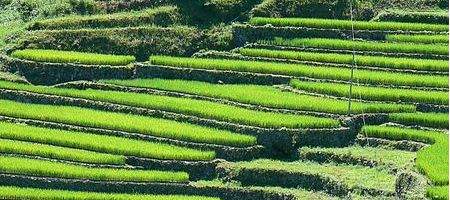The amount of food the world needs could double by 2050, say scientists, with potentially devastating consequences for the planet.

Producing this much food could ramp up the amount of carbon dioxide and nitrogen in the environment and drive numerous species to extinction, say the University of Minnesota researchers.
But this could be avoided, they say, if the high-yielding technologies of rich nations are adapted to work in poor nations, and if all nations use nitrogen fertilizers more efficiently.
“Agriculture’s greenhouse gas emissions could double by 2050 if current trends in global food production continue,” says professor David Tilman.
“Global agriculture already accounts for a third of all greenhouse gas emissions.”
If poor nations continue current practices, he says,they will clear a land area larger than the United States by 2050, ramping up greenhouse emissions. But if richer nations help themimprove yields, that figure could be reduced by four-fifths.
Adopting nitrogen-efficient intensive farming would have a much lower environmental impact than the ‘extensive’ farming practiced by many poor nations.
In 2005, crop yields for the wealthiest nations were more than three times higher than yields for the poorest nations.
“Strategically intensifying crop production in developing and least-developed nations would reduce the overall environmental harm caused by food production, as well as provide a more equitable food supply across the globe,” says assistant professor Jason Hill.






